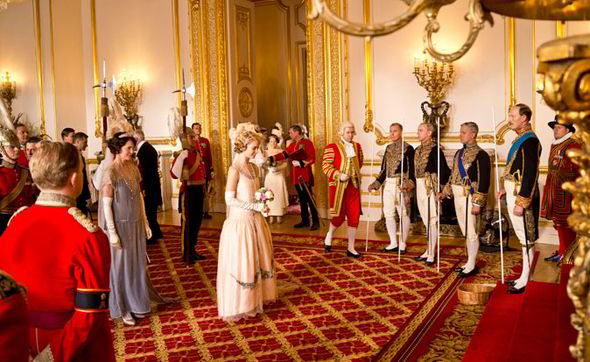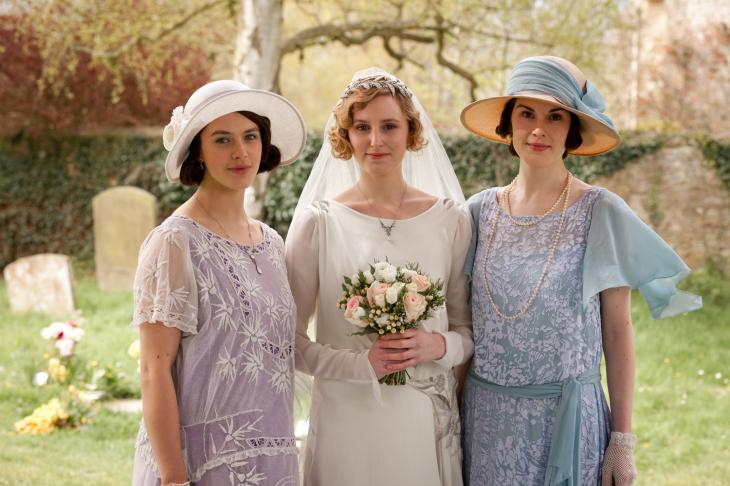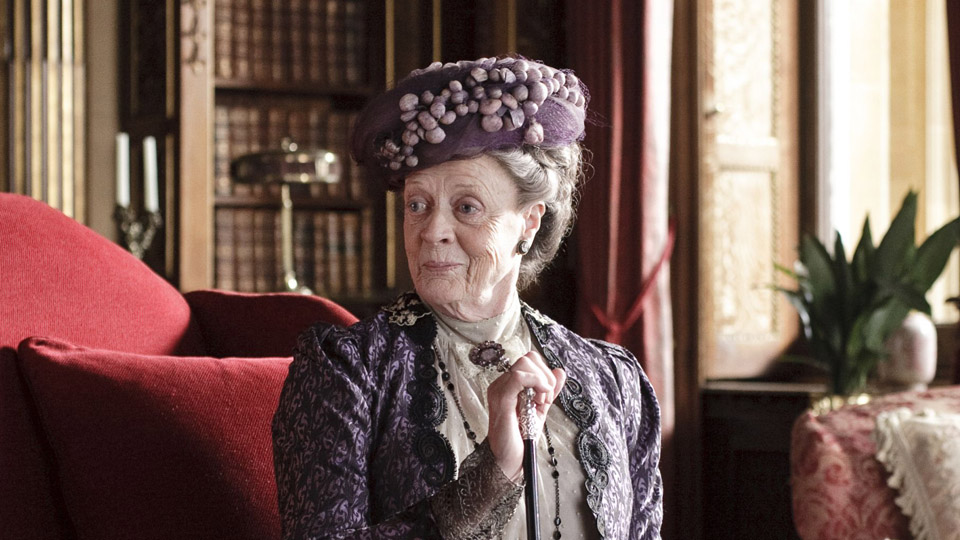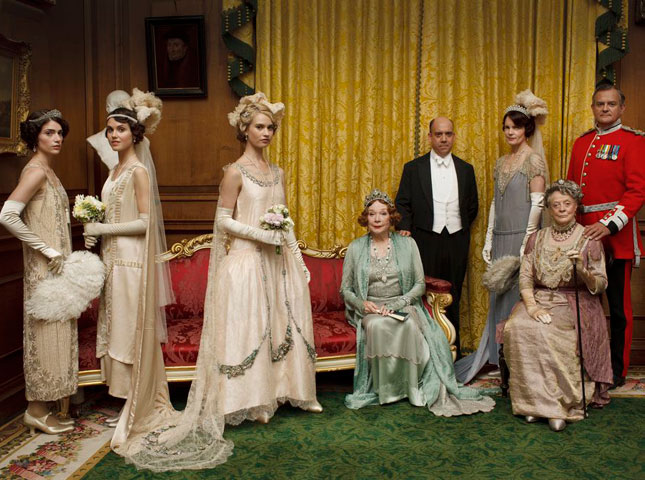
Presentation at the Palace. “Presented, photographed, done.” Says Lady Grantham with relief.
Photo credit: ITV for MASTERPIECE
It’s hard to believe that Season 4 is over. PBS decided to start and end the season with 120-minute episodes which in effect made the season only 8 episodes long.
The finale offered us plenty of the eye candy that we love about Downton Abbey:
- Gorgeous 1920s costumes, replete with feathers, furs, beading, elaborate embroidery, fanciful hats, gloves, beaded bags, diamond tiaras, diamond headbands
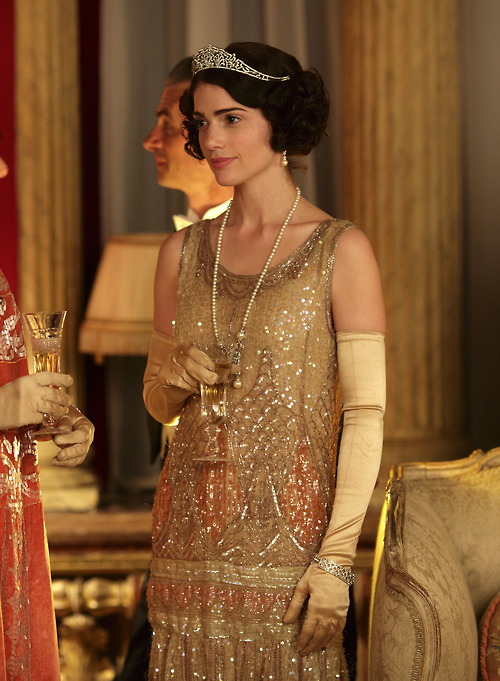
Lady Dudley-Ward is absolutely gorgeous and naughty (by not-so-secretly dating the Prince of Wales.)
Photo credit: ITV for MASTERPIECE
- New interiors and London locations, including our first look at the Grantham’s London town home
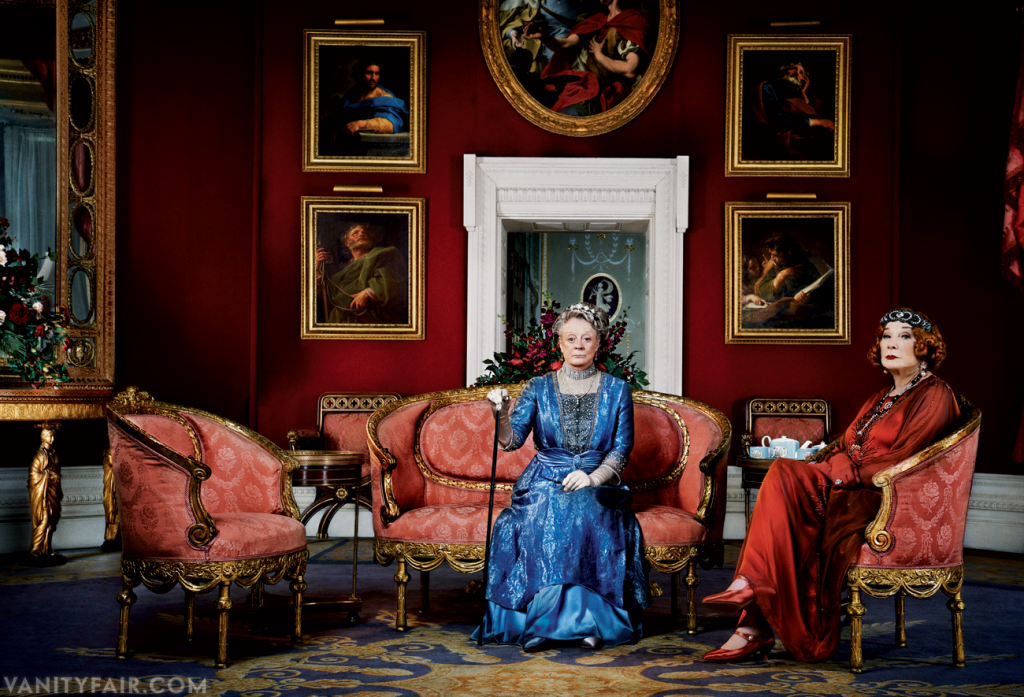
Sumptuous interiors at Grantham House in London (actual location: Basildon Park.)
Photo credit: Vanity Fair
The interiors for Grantham House were actually shot one hour outside of London at Basildon Park, a Georgian mansion surrounded by acres of parkland in Berkshire. The house was built from 1776-83 and was rescued by Lord and Lady Iliffe in the mid 1950s. The house today is a re-creation and restoration of the 18th-century mansion.
Aunt Rosamund’s London town house interiors were shot at West Wycombe Park, a country house near the village of West Wycombe in Buckinghamshire, England, built between 1740 and 1800. It was conceived as a pleasure palace for the 18th-century Sir Francis Dashwood, 2nd Baronet.
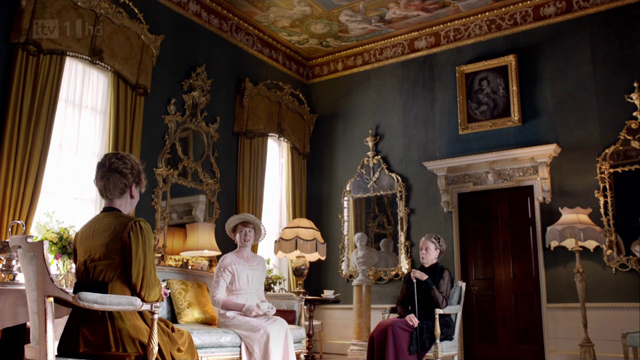
Many conversations take place in Aunt Rosamund’s London drawing room (actual location: West Wycombe Park)
Exteriors were shot in London and much care was taken by the production company to choose locations that didn’t show any signs of modernity (paved streets, advertisements, modern lighting etc.) Read this excellent article from behind the scenes at the London locations “Downton Abbey: London is the Star of the Show” for some more scoop.
- And let’s not forget the pomp and circumstance! The debutante ball at the palace, Lord Grantham in court uniform, the processional, the King and Queen, and all of Rose’s parties, dances, balls, and club outings.
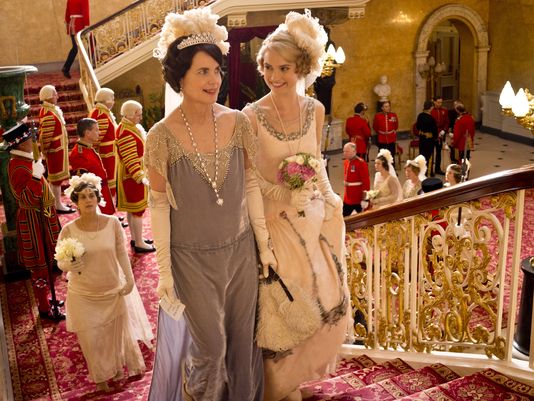
Darling, this is costing us a fortune. You should be kind to marry very well.
Photo credit: ITV for MASTERPIECE
Read more about the London debutante season in this great article by Dawn Aiello. Young aristocratic ladies were brought into London from their country estates and presented to society at court. The season lasted for months and the girls were feted all about town with luncheons, dances, balls, parties, formal dinners, and approved cultural outings so they might meet marriageable young men.
Mrs. Patmore would have been tasked with keeping up a long stream of goodies for guest breakfasts, luncheons, teas, formal dinners, and the ‘at homes’ where the presiding lady of the house would entertain guests with late-night buffet suppers, music and dancing.
Here are some of our Downton-inspired Corks & Cakes posts for your review:
- Five delicious and affordable sparkling wines
- A fun and colorful Blood Orange Cosmo for your cocktail hour or jazz club date
- Tea sandwiches, anyone?
- Asparagus and Herbed Butter canape to go with the champagne or cocktails
And some heartier fare:
- Steak and Ale Pie
- Asparagus with Hollandaise
- Cheese Souffle with Salad Vinaigrette
- Vegetable and Barley Soup with Ham
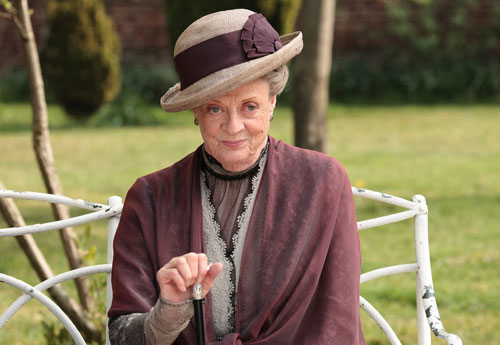
“When you talk like that, I’m tempted to ring for Nanny and put you to bed with no supper.”
Photo credit: ITV for MASTERPIECE
I’ve enjoyed chronicling the season and the era for you. In fact, I might just keep up these Sunday Downton posts because there’s so much more to write about.
Let me ask you: which character will you miss the most until next season? (The Dowager Countess is everyone’s favorite, my guess!)
You can follow her on Twitter @theLady Grantham
Here’s a fun You Tube video: Sh!t the Dowager Countess Says
What other Downton Abbey-related posts would you be interested in reading on Corks & Cake?

